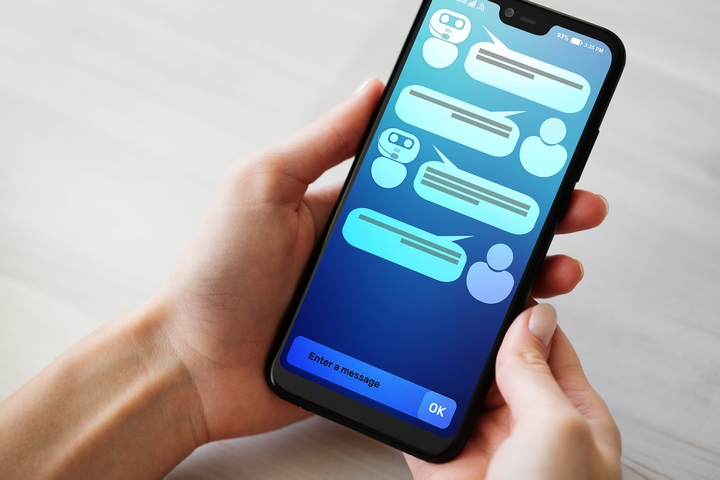
10 Best Practices for How to Test a Chatbot
Chatbots are raising a ruckus among businesses. They are quickly replacing the human element in end-user engagement. They are especially helpful in studying human behaviour and habits.
A chatbot, however, is more than a messaging tool. Chatbots are intelligence driven, so they can use a sophisticated conversational AI to enrich dialogue and discussions. For many chatbots, the goal is to, as conveniently as possible, solve clients’ problems and address their concerns.
The whole experience depends on the ability of a chatbot to guide conversations to achieve acceptable responses. Among the essential attributes of a chatbot is fruitful conversations. It should promptly respond to customers’ questions as precisely as possible. The overriding goal should be to add value to a user’s experience, and testing a chatbot ensures it functions properly.
Below are the ten best practices for how to test a chatbot:
1. Test the Chatbot Onboarding Process

When a user opens a chatbot window on your platform, the chatbot starts the onboarding process. For instance, a greeting text and screen appear on Facebook whenever a user activates the chatbot option. The onboarding process instructs a user on what they should do next. For instance, if you’re engaging with a chatbot for the first time, a Get Started button may be presented to you. Quickly set the ground rules before starting a conversation, so a user knows what to expect from the bot.
Onboarding is critical in determining whether a user will stay or leave. It’s important to factor in this component when you test a chatbot.
2. Test the Chatbot Using Generic Templates

Generic templates are great for ensuring users feel connected as they engage with your bot on various platforms. They enhance engagement.
For effective testing and to engage the attention of a user, make sure the content cards resemble each other across multiple platforms. The fewer channel-specific elements you have on your chatbot, the better. While testing it, try it on various channels to validate the content cards.
Always remember it’s a conversation. The responses should be specific and concise. Avoid using a lengthy string of text. Instead of lengthy text, break text responses into management chunks that don’t exceed a particular limit. Test to ensure there’s no broken text or wall of text.
3. Check Link Navigation

Thoroughly test the connector links in a chatbot’s conversation. Confirm the links are not broken and that they don’t redirect users to the wrong pages.
Broken links and incorrect pages leave a user with a disappointing experience. They may never use your bot again after this experience. Make sure the back button instantly returns the user to the bot interface.
4. Test the Feedback Options

The key is to make sure the feedback options are quickly visible to an end-user. Test them exhaustively with multiple-line and single-line input.
Users are often more than willing to share experiences, both good and bad. Providing them with feedback options helps you to understand their specific experience and how you can improve the chatbot experience.
A feedback point, usually a Contact Us option, must be included in a bot for it to have the desired impact. This provision could be the game-changer for your chatbot. Test it to make sure it works flawlessly before releasing it to the market.
5. Test the Chatbot’s Conversational Flow

The mark of a great conversational flow is one that engages a user by providing relevant responses. It should also communicate or “talk” with tact, always keeping in mind there’s a real person on the other end who needs proper replies.
6. Test the Chatbot’s Problem-Solving Approach

Here, you want to make sure the chatbot does what it was designed to do. For instance, should it be a news bot, test it to make sure it delivers timely news correctly and precisely. For a conversational-commerce bot, you’ll want to check whether it can search and guide a customer to checkout as flawlessly as possible.
7. Test the Chatbot’s Context Awareness

A capable bot should be intuitive enough to keep memory and recall particular talking points. Test it to be sure it understands what a user wants. Developers should ensure the chatbot has a context-stack that tracks critical points in a conversation.
You can test a chatbot’s context awareness by dropping random words in a conversation or leaving a conversation and coming back to see if the flow is still the same.
8. Test Text with Alternative but Valid Responses

To make a chatbot conversation engaging and to break the monotony, spice it up with creative responses to simple messages. Test expressions such as “Hi,” “Hello” or “Hey” to see which variants provoke more engagement. This adds life to the conversation. The developer should provide options for various responses to sign-off words and greetings as well.
To test the chatbot, throw in common words during a conversation. The bot should smartly continue the conversation, or if there’s a glitch, it will break.
9. Test the Chatbot’s Personality and IQ

Like humans, a chatbot has a personality. It can be quick, witty, and humorous. This is one area you need to focus on. The bot should be designed to impress with intelligent responses.
10. Test the Chatbot for Security

A chatbot feeds off and generates sensitive data that has to be handled securely. The responses are linked to critical customer information, which increases the potential for security threats. Test it to identify potential security threats and have them addressed before releasing it to the market.
The aim of a chatbot is to satisfy the end-user. Testing a chatbot is critical to ensuring this goal is met. Testing is, however, not a one-off event. As users interact with it, there will be a need for tweaking and reconfiguring, and hence, retesting.

